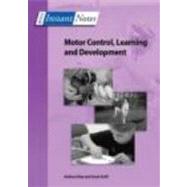
| Abbreviations | p. ix |
| Preface | p. x |
| What is motor control? | p. 1 |
| Definition of terms | p. 1 |
| Origins of the field | p. 4 |
| Key players and motor control landmarks | p. 4 |
| Why study motor control? | p. 6 |
| Classification of skill | p. 9 |
| Definition of terms | p. 9 |
| Task perspective skill classifications | p. 11 |
| Classification from a performance-proficiency perspective | p. 17 |
| Movement terminology | p. 19 |
| Measurement in motor control | p. 23 |
| Outcome measures | p. 25 |
| Performance measures | p. 26 |
| Measuring learning | p. 33 |
| Validity and reliability | p. 37 |
| Theories of control | p. 41 |
| Reflex theories | p. 42 |
| Hierarchical theories | p. 42 |
| Dynamical systems theories | p. 45 |
| Ecological theories | p. 48 |
| Coordinative structure hypothesis | p. 53 |
| Information processing | p. 59 |
| Basic concepts | p. 59 |
| Reaction time and movement time | p. 61 |
| Simple, discriminative, choice reaction, and recognition reaction time | p. 62 |
| Factors affecting reaction time | p. 64 |
| Movement time and Fitts' law | p. 70 |
| Anticipation | p. 70 |
| Neurological issues | p. 75 |
| The nervous system | p. 75 |
| The neuron | p. 77 |
| The central nervous system | p. 78 |
| Control of movement by the brain | p. 80 |
| The peripheral nervous system | p. 84 |
| Sensory contributions to control | p. 87 |
| Proprioception and movement | p. 87 |
| The role of proprioception | p. 90 |
| Exteroceptive information | p. 92 |
| Theories of motor learning | p. 105 |
| Theories of motor learning | p. 105 |
| Adams' closed-loop theory | p. 107 |
| Schmidt's shcema theory | p. 110 |
| Ecological theory | p. 114 |
| Constraints theory (Newell, 1986) | p. 115 |
| Ecological perspective | p. 116 |
| Stages of motor learning | p. 121 |
| The Fitts and Posner three-stage model | p. 122 |
| Bernstein's stage theory of motor learning | p. 124 |
| Gentile's two-stage model | p. 130 |
| Indicators of learning | p. 132 |
| Memory | p. 137 |
| Atkinson and Shiffrin's multistore model | p. 138 |
| Craik and Lockhart's levels-of-processing model | p. 144 |
| Forgetting | p. 145 |
| Disorders of memory | p. 146 |
| Enhancing memory | p. 147 |
| Implications for practice | p. 151 |
| Task analysis: breaking the task down into its component parts | p. 152 |
| Conditions of practice | p. 155 |
| Implementing practice variability: contextual interference | p. 161 |
| The role and function of feedback | p. 171 |
| Augmented feedback: what is it, what does it do and do we really need it? | p. 172 |
| Types of augmented feedback | p. 174 |
| Different forms of knowledge of results and knowledge of performance | p. 175 |
| Important considerations for giving augmented feedback | p. 180 |
| Motor development | p. 191 |
| Maturational perspective | p. 192 |
| Reflexes | p. 192 |
| The process underlying development | p. 197 |
| Deficiencies of maturationalist explanations | p. 197 |
| Cognitive approaches to development | p. 199 |
| Spontaneous movements | p. 201 |
| A dynamical systems approach to motor development | p. 203 |
| Exploration and selection | p. 205 |
| Perception and action | p. 208 |
| Development of fundamental movement skills | p. 215 |
| The first two years | p. 215 |
| Two to seven years of age | p. 215 |
| Seven to puberty | p. 216 |
| Puberty onwards | p. 216 |
| Postural development | p. 216 |
| Development of locomotion: crawling, cruising, walking, and running | p. 220 |
| Development of manual skills: grasping, reaching and grasping, catching, and throwing | p. 224 |
| Index | p. 243 |
| Table of Contents provided by Ingram. All Rights Reserved. |
The New copy of this book will include any supplemental materials advertised. Please check the title of the book to determine if it should include any access cards, study guides, lab manuals, CDs, etc.
The Used, Rental and eBook copies of this book are not guaranteed to include any supplemental materials. Typically, only the book itself is included. This is true even if the title states it includes any access cards, study guides, lab manuals, CDs, etc.